
Who Gets What — and Why: The New Economics of Matchmaking and Market Design
by
Alvin E. Roth
Published 1 Jun 2015
Shapley and Scarf showed that for any preferences that patients and their surgeons might have regarding which kidneys they would like, there was always a way to find a set of cyclical trades they called “top trading cycles,” with the property that no group of patients and donors could go off on their own and find a cycle of trades that they liked better. Organizing trades this way would help make it safe for surgeons to enroll their patients in such a market, since the patients couldn’t do better by trading differently among themselves. As I began to play with this model, I started to think of it as the potential architecture for a centralized clearinghouse that could help traders overcome the obstacles to barter. But for such a clearinghouse to find the most desirable set of trades, it would need to have access to patients’ needs and preferences, and so participation would have to be safe in another way, too. Since preferences are by and large private information, for a clearinghouse to work people would have to reveal this information.
…
In some respects, these services are faster even than taxis: you don’t have to take time to pay when you reach your destination, since the same app through which you called the car will also pay the bill automatically through your credit card. This works because your original call goes through a central clearinghouse that archives your credit card details. Perhaps you are beginning to see a pattern here and can anticipate (even build) marketplaces that don’t yet exist. Limousines have been around for a long time, and there have always been spare bedrooms that you could arrange to rent through friends.
…
Under the new plan, third-year medical students would apply to residency programs on their own, as before, and the residency programs would invite them to interviews, also as before. But then a change: after the interviews had been conducted, the process of making offers would be done through the new centralized clearinghouse. This meant that students would submit to the clearinghouse a rank order list of the residency programs at which they had interviewed, indicating their first choice, second choice, and so on. In parallel, those residency programs would submit a rank order list of students. Before the clearinghouse opened, both applicants and employers would exchange information about job descriptions (including wages and other features) and about the applicants’ qualifications, so that each side could form well-considered preferences regarding the other.
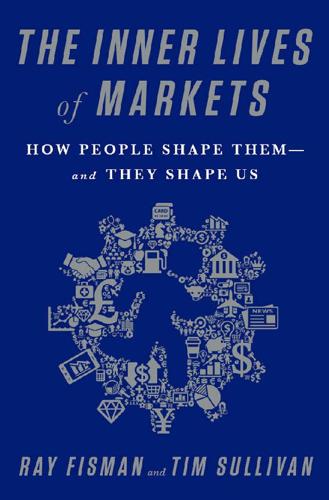
The Inner Lives of Markets: How People Shape Them—And They Shape Us
by
Tim Sullivan
Published 6 Jun 2016
(According to market design guru Al Roth, one theory holds that the term “fraternity/sorority rush,” which today describes the process by which sororities and fraternities recruit new members, comes from the frenzied competition among sororities to lock in new members.4) It’s what prompted medical residency programs to develop a centralized clearinghouse in the 1940s to fend off students receiving exploding offers before they were done with their intro to anatomy course. These allocation problems all now have centralized clearinghouses, many designed with the basic deferred acceptance algorithm as their foundations. But that’s really all that Gale and Shapley provided: a conceptual framework that market designers have, for several decades now, been applying, evaluating, and refining.
…
It turned out that there weren’t quite enough coat hooks at the back of his classroom to go around, and later arrivals had to leave their jackets crumpled on a bench (apparently a source of grade school ignominy for order-loving Swedes). So the “market” for coat hooks began to unravel backward in much the same way that, in the absence of a centralized clearinghouse, residency programs and judges raced to recruit medical and law students earlier and earlier. Now, Jonas Vlachos is hardly an apologist for the glories of free enterprise and markets. He’s from Sweden, for one thing, and Scandinavians are known worldwide for their love of big taxes and big government.
…
INDEX Abidjan, Ivory Coast, 167–168 Adfibs.com, 69 adverse selection, 48, 51–55, 57, 59 advertising, as money burning, 70–71 Super Bowl advertising, 70–71 AdWords, 14, 101 Airbnb, 3, 6, 50, 109, 125, 170–172 Akerlof, George, 43–51, 58–59, 64, 112 Alaskoil experiment, 55–57, 58–59 algebraic topology, 44–45 Amazon, 2, 3, 16, 50, 51, 52, 59, 74, 91, 95, 97, 108, 110, 119, 126, 128–129 American Express, 115–116 America’s Second Harvest, 154–160 Amoroso, Luigi, 21 Angie’s List, 120 “animal spirits,” 50 applied theory in economics, 45, 50, 75–76 Arnold, John, 156–158, 160 Arrow, Kenneth, 30–34, 36–37, 40, 76, 117, 180 ascending price English auctions, 83, 100 asymmetric information, 41, 44–55 attribution theory, 177–178 auctions AdWords, 14, 101 auction theory, 82–84 coat hooks, 151–152, 174 design, 14, 101–102 first-price sealed-bid, 86–87, 99–100 first-price (live), 84 internet, 94–97 types of, 81–82 wireless spectrum, 102–103 See also eBay; Vickrey auctions AuctionWeb, 40 Ausubel, Larry, 98 Azoulay, Pierre, 112 Bank of America, 113–115 barriers to entry, in marketplace, 173 baseball posting system, 79–81 Bazerman, Max, 55–57 Becker, Gary, 35, 161–162 Berman, Eli, 67 Berners-Lee, Tim, 41–42 Big Data, Age of, 15 Blu-ray-HD DVD format war, Sony, 125–126 Book Stacks Unlimited, 42–43 Boston public schools, 144–149 Boston University MBA students experiment (Bazerman and Samuelson), 55–57, 58–59 See also Alaskoil experiment bridge design, 141–142 Brown, William P., 83–84 Brownian motion, 28–29 cab drivers, Uber vs., 169–170, 172 Camp, Garrett, 170 candle auctions, 82 capitalism, free-market, 172–173 car service platform, 169–171 cash-back bonus, 116 cash-for-sludge transactions, 167–169 See also Summers, Larry centralized clearinghouses, 140–141 Champagne fairs, 105–106, 126–128 Changi POW camp, 175–177 Le Chatelier, Henry Louis, 29 Le Chatelier’s principle, 29 cheap talk, 62–66, 69 chess, difference between Cold War and, 26 See also poker, bluffing in child labor, 180 cigarettes, as currency in German POW camp, 8–9 Clarke, Edward, 93 Clavell, James, 175 clerkship offers, with federal judges, 140 coat hook, 151–152, 174 Codes of the Underworld (Gambetta), 68 Cold War, difference between chess and, 26 See also poker, bluffing in Collectible Supplies, 128–129 “College Admissions and the Stability of Marriage” (Gale and Shapley), 137 commitment, signs of, 62–63, 69–71, 72–75 community game, 178–179 competition models of, 35, 166, 172–173 platform, 124–126 unethical conduct with, 180–181 “Competition is for Losers” (Thiel), 173 competitive equilibrium, existence of, 29, 31–34, 36–37, 40, 45, 76 competitive markets, 35, 124–126, 172–174, 180–181 See also platforms competitive signaling, 70–71 congestion pricing model, 86, 94 constrained optimization, 85–86, 133 contractorsfromhell.com, 120 copycat competitors, 172–173 corporate philanthropy, 72–75 Cowles, Alfred, 25, 27 Cowles Commission for Research in Economics, 25, 27, 31, 134 “creative destruction,” 50 credit card platforms, 113–116, 123–124 criminal organizations, informational challenges of, 68 currency, at Stalag VII-A POW camp, 8–9 customer feedback, 52, 74–75 Davis, Harry, 154, 157 Debreu, Gérard, 20, 24, 25, 32–33, 36–37 decentralized match, 139–140 deferred acceptance algorithm, 137–141, 145–149 Delmonico, Frank, 164 descending price auctions, 81–82 design, auction, 14, 101–102 Digital Dealing (Hall), 94 Discover card, 115–116 distribution of income, 22 Domar, Evsey, 36–37 Dorosin, Neil, 142–144 Douglas Aircraft Company, 25 Dow, Bob, 1–2 Dow, Edna, 1–2 Drèze, Jacques, 85–86 dumping toxic waste, transactions for, 167–169 Dutch auctions, 81–82 dysfunction, market, 36, 75–77, 143 eBay adverse selection on, 51–55, 57 auction listings, 94–97 concerns on model for, 43, 46, 48 on seller motivation for giving to charities, 73–75 start of, 39–41 as two-sided market, 109, 119 e-commerce, 41–43, 52–55 “The Economic Organization of a P.O.W.

A First-Class Catastrophe: The Road to Black Monday, the Worst Day in Wall Street History
by
Diana B. Henriques
Published 18 Sep 2017
He chose to explore the Chicago Board Options Exchange, which was just opening its doors, and gained a solid legal grounding in the world of options. Meanwhile, he landed a job in the legal department of the American Stock Exchange, where he was soon overseeing the Amex’s ambitious options trading operation. A few years later, he was appointed to the board of the Options Clearing Corporation, which acted as the central clearinghouse for settling all options trades, and he traveled regularly to Chicago for board meetings. The trips had become a bit of a romance for the lifelong New Yorker. “I was smitten by the ingenuity and creativity and willingness to take risks that I found in Chicago,” he later recalled. “There was an openness, a freshness, a lack of haughtiness in Chicago.
…
* * * IN CHICAGO, THE torrent of trading in the stock index futures and options pits had mirrored the deluge in New York. The options market had been under intense pressure. Some firms were racking up enormous losses. First Options, the Continental Bank subsidiary that was the largest clearing firm in the options market, was a special concern of the Options Clearing Corporation, the market’s central clearinghouse. First Options essentially backstopped all the trades of its twelve hundred client firms; and the clearinghouse backstopped First Options. By the close of trading on Friday, nine First Options clients, all firmly in the black on Wednesday night, were in serious trouble. Only three of them had not run up big losses, and one of those was near the edge.
…
Unfortunately, it had to pay the Merc before it collected its money from the CBOE. If the two exchanges didn’t agree to net out the firm’s position, a default was inevitable. Before that happened, Brodsky worked out an ad hoc payment deal with a longtime friend who ran the options market’s central clearinghouse. It was done virtually on a handshake. “There was no writing, no lawyers,” Brodsky said. “It was the middle of the night.” The deal had forestalled a devastating chain of defaults that could have crippled both markets. Now the Merc was facing another default threat. By 7 a.m., Chicago time, Morgan Stanley still had not fully settled its account.

The Alliance: Managing Talent in the Networked Age
by
Reid Hoffman
,
Ben Casnocha
and
Chris Yeh
Published 15 Jan 2014
Perhaps your industry has unique dynamics, and you want to know how the alliance needs to adapt to those dynamics. Perhaps there’s a variation on the tour of duty framework that would work best in your company. That’s why we’ve created TheAllianceFramework.com. This website and the related LinkedIn group will act as a central clearinghouse for additional content, interactive assessments, and even practical worksheets and training guides, to expand our collective understanding of the alliance. You’ll also find information about keynote speaking, training sessions, and webinars. We invite you to join us at TheAllianceFramework.com, to help us explore these issues and to help you bring the alliance to your organization.
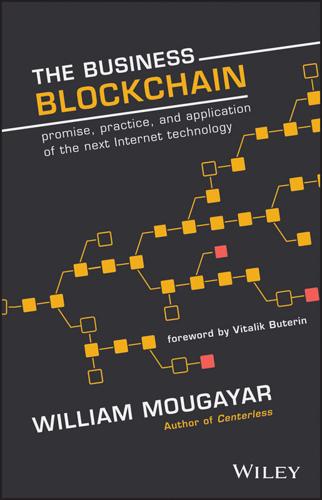
The Business Blockchain: Promise, Practice, and Application of the Next Internet Technology
by
William Mougayar
Published 25 Apr 2016
Although a global bank or exchange is not happening any time soon, the feelings and behaviors of a global bank are needed. The blockchain can help. The Financial Services sector will need to stall new regulation while simultaneously updating the existing regulation to accommodate the innovation introduced by the blockchain. The litmus test is to run transactions without a central clearinghouse in the middle. Verifying identity and validating counterparties can be done in a peer-to-peer manner on the blockchain, and that is the preferred method that organizations should be trying to perfect. Strategic decisions await financial institutions, and they must have the courage to leapfrog, and not just advance to the next level playing field and be content with it.
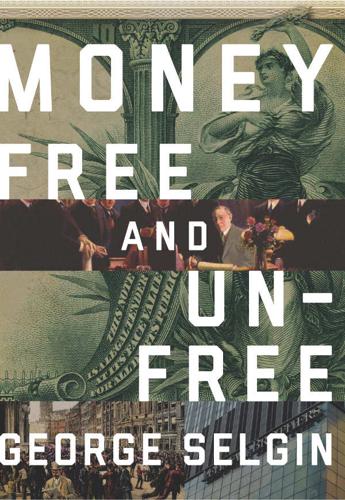
Money Free and Unfree
by
George A. Selgin
Published 14 Jun 2017
In a free-banking system, banks treat rival banks’ notes much as they treat checks drawn on rival banks today: they routinely return them to their sources for redemption. Indeed, the modern practice of “clearing” checks daily, with net dues settled by transfer of base money, usually on a central bank’s books, grew out of the pre–central banking practice of regular note exchange, with banks returning rivals’ notes directly to them or to central clearinghouses and settling accounts in specie. This routine note-exchange and settlement process imposes strict limits on credit expansion by individual note-issuing banks and, hence, by the banking system as a whole, creating a tight connection between those limits and the available supply of specie reserves.
…
Many asset currency proposals called upon the comptroller of the currency to allow national banks to branch, while also requiring banks to redeem their notes—that is, to exchange them, on demand, for gold or greenbacks—at their branches as well as at their head offices, both as an alternative to correspondent banking (and the consequent pyramiding of reserves) and as the most straightforward means for absorbing redundant bank notes: unlike unit banks, banks with nationwide branch networks could resort to local exchanges or “clearings” of notes and checks as a less costly and more expeditious alternative to shipping them to one or more central clearinghouses or redemption agencies. Besides aiding the prompt mopping-up of excess currency, and reducing interior banks’ reliance upon city correspondents, branch banking would also enhance banks’ safety through greater diversification of bank assets and liabilities. For these reasons, pleas for branch banking quickly became “an integral part” of the asset currency movement (Livingston 1986: 80).
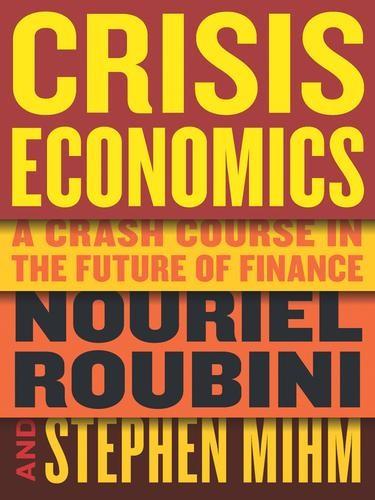
Crisis Economics: A Crash Course in the Future of Finance
by
Nouriel Roubini
and
Stephen Mihm
Published 10 May 2010
Unfortunately, while some of the existing credit derivatives could be standardized and traded on such a central exchange, not all of them can be: many of the OTC derivatives are next to impossible to standardize and are not traded in sufficient volumes; their price can’t be consistently quantified like a stock or bond (or a common derivative). These more esoteric credit derivatives should be registered in a central clearinghouse. Such institutions already exist for other, simpler kinds of derivatives: the Options Clearing Corporation, for example, handles a host of derivatives related to equities and commodities. Though a private organization, it has the imprimatur of both the SEC and the CFTC. Part of its job is to make certain that the parties to a derivatives contract have sufficient collateral to make good on their promises.
…
The mortgages and other loans must be high quality, or if not, they must be very clearly identified as less than prime and therefore risky. Equally comprehensive reforms must be imposed on the kinds of deadly derivatives that blew up in the recent crisis. So-called over-the-counter derivatives—better described as under-the-table—must be hauled into the light of day, put on central clearinghouses and exchanges, and registered in databases; their use must be appropriately restricted. Moreover, the regulation of derivatives should be consolidated under a single regulator. The rating agencies must also be collared and forced to change their business model. That they now derive their revenue from the firms they rate has created a massive conflict of interest.
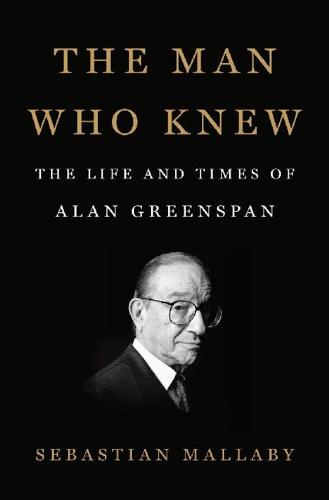
The Man Who Knew: The Life and Times of Alan Greenspan
by
Sebastian Mallaby
Published 10 Oct 2016
Moreover, the thrust of her regulatory instincts came to be widely accepted after the 2008 crisis, providing a belated vindication.9 In essence, her chief worry was that the fastest-growing parts of the derivatives market lacked the stabilizing institutions of traditional, exchange-traded equities or futures, with the result that the whole market could descend into chaos if a large trading firm declared bankruptcy. One such stabilizing institution was the central clearinghouse, which stood between buyer and seller and guaranteed payments on trades; unnervingly, non-exchange-based derivatives were traded “over the counter,” with banks entering into swap contracts directly with each other—there was no third-party guarantee that obligations would be honored. Another stabilizing institution was the requirement that traders put down money, or “margin,” to cover their potential debts; in over-the-counter markets, there were no standard margin requirements, so the potential losses from nonpayment were larger.
…
Unlike Fannie and Freddie, Lehman Brothers fell into the Bear Stearns category: it was a poster child for the financial practices that Greenspan had defended.40 It was party to almost a million bilateral derivatives contracts, those over-the-counter deals that Brooksley Born had wanted to move into centralized clearinghouses. It was also an enthusiastic responder to the incentives created by the Fed: it had borrowed billions in short-term funds, loading up on cheap money while interest rates were low and using it to buy higher-yielding mortgages. In Greenspan’s more hopeful moments, he had trusted that Lehman would take such risks only if it had sufficient capital to absorb losses.
…
Understanding that market discipline was fallible, but fearing correctly that regulation might also fail, Greenspan could have pushed harder for that regulatory third way: mechanisms to ensure that when the inevitable failures did occur, the damage could be minimized. Thicker capital cushions were an obvious example—Timothy Geithner had tried and failed to get this done, but he might have achieved more given stronger support from the Fed chairman. Pushing over-the-counter derivatives into central clearinghouses was another example: had Greenspan thrown his weight behind a sounder version of Brooksley Born’s proposal, it might have been harder for AIG to accumulate a swaps portfolio so large that it menaced the entire economy.42 Discouraging too-big-to-fail lenders was yet a third example of a path not taken: during the crisis, large banks, investment banks, and shadow banks were exposed as having been more reckless than supposedly risky hedge funds, because the latter were small enough to fail, and so had fewer corrupting incentives.43 Forcing more regulation onto the shadow-banking sector could have been the final item on a resiliency agenda.
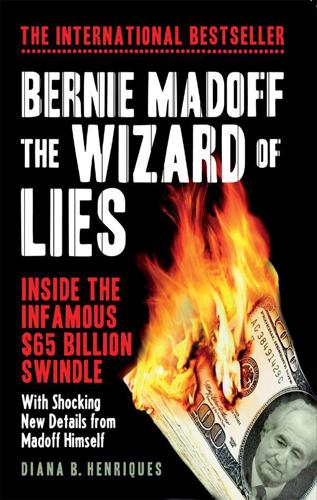
Bernie Madoff, the Wizard of Lies: Inside the Infamous $65 Billion Swindle
by
Diana B. Henriques
Published 1 Aug 2011
Besides the phoney trade confirmations and account statements that had been generated for more than a decade, he had set up the bogus “trading platform” that made it appear as if actual trades were being conducted with European counterparties, although the reciprocal trader was actually an employee on another computer terminal hidden in a different room. And he had the clincher: apparent proof that all the stocks he claimed to have purchased were safely held in Madoff’s account at Wall Street’s central clear-inghouse, the Depository Trust & Clearing Corporation, officially called the DTCC but known informally among veteran traders as “the DTC”. This was the acid test for DiPascali’s masterpiece, a computer simulation of a live feed from the DTCC. He had taken care to duplicate exactly the clearinghouse’s logo, the page format, the printer font and type sizes, and the paper quality of actual DTCC reports.
…
(Excerpts were also cited as Exhibit 85 in Picard v. Fairfield Greenwich Amended Complaint.) 119 “Come up this afternoon”: According to Tucker’s testimony, Madoff extended a similar invitation that day to Carlo Grosso, a principal of the Kingate funds based in London, who was visiting New York. 119 Wall Street’s central clearinghouse, the Depository Trust & Clearing Corporation: Originally named the Depository Trust Company, the clearinghouse later combined with a separate clearinghouse called the National Securities Clearing Corporation, on whose board Madoff served in the late 1980s, and was renamed the Depository Trust & Clearing Corporation, or DTCC.

Making Ideas Happen: Overcoming the Obstacles Between Vision and Reality
by
Scott Belsky
Published 31 Mar 2010
However, you will still need time for processing—going through all of your day’s notes and communications and distilling them down to the primary elements. For those who still take paper notes and appreciate tangible project management, you will want to use a tangible in-box—a general pile of stuff that has yet to be classified. Most productivity frameworks—like David Allen’s Getting Things Done—suggest such a central clearing-house for all of the stuff that you accumulate but can’t immediately execute or file. This in-box is not a final destination, but rather a transit terminal where items await processing. During a busy day of meetings, you will not have time to start taking action or filing things away. How about all of the digital stuff that flows in every day?
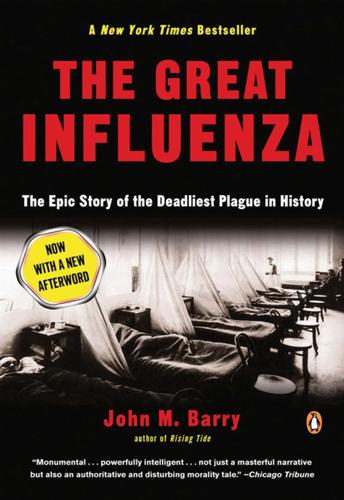
The Great Influenza: The Story of the Deadliest Pandemic in History
by
John M. Barry
Published 9 Feb 2004
Doctors ruled, for me, so gently, the whole still concert.” Behind this still concert lay Welch, the impresario. By the first decade of the twentieth century, Welch had become the glue that cemented together the entire American medical establishment. His own person became a central clearinghouse of scientific medicine. Indeed, he became the central clearinghouse. As founding editor of the Journal of Experimental Medicine, the first and most important American research journal, he read submissions that made him familiar with every promising new idea and young investigator in the country. He became a national figure, first within the profession, then within science, then in the larger world, serving as president or chairman of nineteen different major scientific organizations, including the American Medical Association, the American Association for the Advancement of Science, and the National Academy of Sciences.

Reinventing Capitalism in the Age of Big Data
by
Viktor Mayer-Schönberger
and
Thomas Ramge
Published 27 Feb 2018
They work through clever market design combined with a different type of matching algorithm. Think, for example, of choosing which patient gets a donor kidney. Donor kidneys aren’t sold (at least legally, although some economists have suggested they should be), so preferences can’t be condensed and simplified into a stated price. In such markets, a central clearinghouse often collects preference information from all market participants and uses advanced matching algorithms to connect suitable market participants to transact. The goal is to produce as many suitable matches as possible. This sort of matching, too, has recently improved significantly, thanks to enhanced algorithms and a better understanding of which matching algorithm works best for which type of market.

The End of Big: How the Internet Makes David the New Goliath
by
Nicco Mele
Published 14 Apr 2013
It demolishes the “bigness” of the old institution—the “invisible primary” of money and major donor access—by taking advantage of a fundamental characteristic of radical connectivity: the ability to connect everyone equally. With enough time and energy, anyone can use ActBlue to build a political money power base within the Democratic Party—not just W. Averell Harriman or Hillary Clinton. And yet as a central clearinghouse, ActBlue is in its own way Big; it just hasn’t wielded its big power yet, preferring to remain a boring (but vital) piece of infrastructure. To that extent, ActBlue may provide one important structure for revamping our parties so that they are democratic and yet still capable of producing serious leaders addressing serious issues.
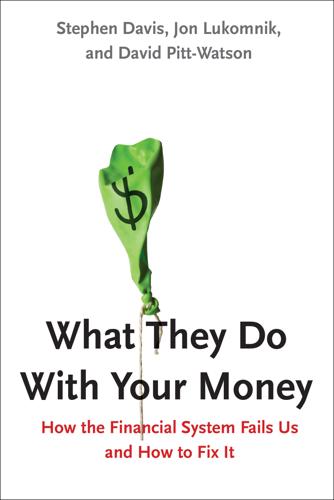
What They Do With Your Money: How the Financial System Fails Us, and How to Fix It
by
Stephen Davis
,
Jon Lukomnik
and
David Pitt-Watson
Published 30 Apr 2016
Other financial instruments can also, in Warren Buffett’s memorable phrase, become “financial weapons of mass destruction.” Public disclosure of terms and conditions should be a requirement before any financial instrument can be tradable or transferable.38 While CDS terms are becoming standardized, thanks to the International Swaps and Derivatives Association, there is no central clearinghouse of such instruments.39 We could also use information to keep our regulators on their toes. If we want financial markets around the world to be effective, why isn’t there a global rating of regulators? Since investors can be expected to gravitate to the most trustworthy financial centers, such a rating might help create a race to the top, rather than one to the bottom.
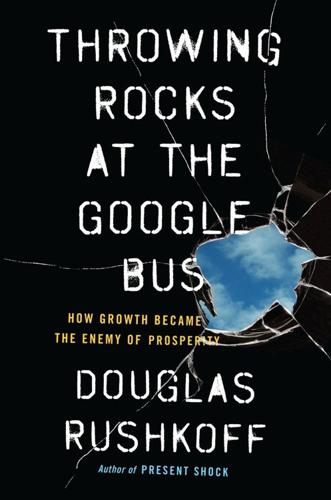
Throwing Rocks at the Google Bus: How Growth Became the Enemy of Prosperity
by
Douglas Rushkoff
Published 1 Mar 2016
This, as we have seen, is an even bigger drag on the potential velocity of money. What good is a distributed network like the Internet if all the actors on it still depend on central authorities in order to engage in peer-to-peer activity? How is it truly peer-to-peer if it goes through a central clearinghouse? It’s still a bunch of decentralized individuals, each interacting with a monopoly platform—a new front end on the same old system. These are the problems that the next generation of digital transaction networks are aiming to address. How can a distributed network of participants transfer and verify value collectively, without the need for a central authority?
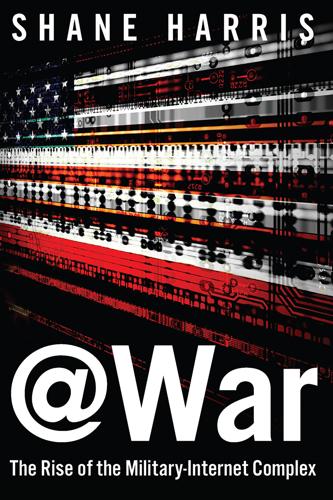
@War: The Rise of the Military-Internet Complex
by
Shane Harris
Published 14 Sep 2014
Operators of “critical infrastructure”—which could be broadly defined to include electrical companies, nuclear power plant operators, banks, software manufacturers, transportation and logistics companies, even hospitals and medical device suppliers, whose equipment could be hacked remotely—would be required by law or regulation to submit the traffic to and from their networks for scanning by an Internet service provider. The provider would use the signatures supplied by the NSA to look for malware or signs of a cyber campaign by a foreign government. It was a version of Alexander’s original plan to make the NSA the central clearinghouse for cyber threat intelligence. The NSA wouldn’t do the scanning, but it would give all the requisite threat signatures to the scanner. That helped the NSA avoid the impression that it was horning its way into private computer networks, even though it was actually in control of the whole operation.

Cataloging the World: Paul Otlet and the Birth of the Information Age
by
Alex Wright
Published 6 Jun 2014
Located near the Royal L ibrary 92 T he Microphotic B oo k and Museum on the Rue de la Villa Hermosa in Brussels, the museum served as a professional gathering place as well as a public exhibition space with classrooms and a lecture hall outfitted with a lantern projector and screen.7 Building on his success with the Museum of the Book and his new role as president of the newspaper association, Otlet saw an opportunity to apply his ideas about cataloging and classification to the world of periodicals, by creating a similar hub for the international newspaper industry. He hoped that such an institution could serve as not just an exhibition hall, but also as a central clearinghouse for all the world’s newspapers. He began directing his colleagues at the IIB to put extra effort into expanding its collections of newspapers and journals and initiated plans for an international newspaper museum whose charter would be to collect and curate periodicals from all over the world, to create “a collection as complete as possible of works on the Press as well as forming a complete collection of older periodicals and newspapers.”8 It would also collect works on newspaper history and key works on copyright law and freedom of expression.

The Startup Way: Making Entrepreneurship a Fundamental Discipline of Every Enterprise
by
Eric Ries
Published 15 Mar 2017
HOW GROWTH BOARDS OPERATE Apart from its legal and compliance obligations, a startup board has three primary responsibilities: To be a sounding board for the founders and executives, helping them plot strategy, and hosting the pivot-or-persevere meeting (see Chapter 4). To act as the central clearinghouse for information about the startup, taking on the burden of reporting on behalf of the founders to key financial stakeholders like general partners and limited partners of the investment firm (see Chapter 3). To be the gatekeepers of future funding, either by writing checks themselves or by encouraging (or vetoing) sources of outside funding (see Chapter 3).

Utopia Is Creepy: And Other Provocations
by
Nicholas Carr
Published 5 Sep 2016
Such a blinkered and self-serving view of the world may be forgivable in a young entrepreneur trying to get an ambitious technology company off the ground, but as Google has grown and its influence expanded, its hubris has become a problem. It accounts for many of the missteps that have stained the company’s reputation in recent years. EDWARDS’S STORY ends when he leaves the company in March of 2005. In the years since, Google’s power and influence have only grown. It has become the web’s central clearinghouse for information and one of the internet’s principal tollgates. As people spend more time and do more things online, they also perform more Google searches and click on more Google ads—and the business’s coffers swell. But the company’s recent history is not quite as buoyant as its bottom line suggests.

High-Frequency Trading: A Practical Guide to Algorithmic Strategies and Trading Systems
by
Irene Aldridge
Published 1 Dec 2009
A similar effect was documented by Stoll and Whaley (1990): for returns measured in 5-minute intervals, both S&P 500 and money market index futures led stock market returns by 5 to 10 minutes. The quicker adjustment of the futures markets relative to the equities markets is likely due to the historical development of the futures and 198 HIGH-FREQUENCY TRADING equities markets. The Chicago Mercantile Exchange, the central clearinghouse for futures contracts in North America, rolled out a fully functional electronic trading platform during the early 1990s; most equity exchanges still relied on a hybrid clearing mechanism that involved both human traders and machines up to the year 2005. As a result, faster informationarbitraging strategies have been perfected for the futures market, while systematic equity strategies remain underdeveloped to this day.

Business Lessons From a Radical Industrialist
by
Ray C. Anderson
Published 28 Mar 2011
Those offsets allow a university to burn the same fossil fuels, operate the same inefficient buildings, and waste as much material as ever, but pay for someone else to plant trees, perhaps in another country, or develop a wind farm in Texas. I can understand why they might find this approach attractive. Compared with the costs of reducing their own footprint, buying an offset can look very cost effective. And, very often, these offsets are both real and meaningful. Though there is no central clearinghouse to certify their legitimacy, they can still be examined and certified by independent third parties. When the offsets meet a set standard—and that standard requires independent verification, record keeping, and auditing measures—colleges and universities can have some faith in them. Are there abuses?
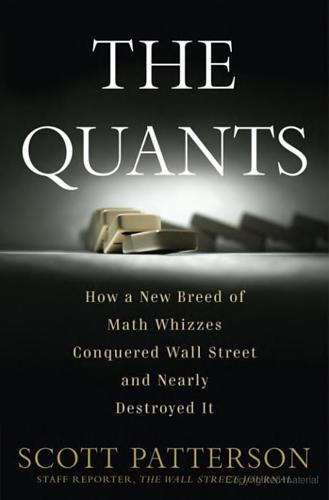
The Quants
by
Scott Patterson
Published 2 Feb 2010
More commonly, swaps are written on baskets of hundreds or thousands of bonds and on other kinds of loans. They could metastasize without end—and did—reaching a value of more than $60 trillion a decade after Weinstein arrived on the scene. What’s more, since the trades were commonly done on a case-by-case basis on the so-called over-the-counter market, with no central clearinghouse to track the action, CDS trading was done in the shadow world of Wall Street, with virtually no regulatory oversight and zero transparency. And that was just the way the industry wanted it. Soon after Weinstein took the job, his boss (not Tanemura) jumped ship. Suddenly he was the only trader at Deutsche in New York juggling the new derivatives.

Space Chronicles: Facing the Ultimate Frontier
by
Neil Degrasse Tyson
and
Avis Lang
Published 27 Feb 2012
No Office of Research and Technology Applications or other organizational structures performing the functions of this subsection shall substantially compete with similar services available in the private sector. (d) Dissemination of technical information The National Technical Information Service shall (1) serve as a central clearinghouse for the collection, dissemination and transfer of information on federally owned or originated technologies having potential application to State and local governments and to private industry; (2) utilize the expertise and services of the National Science Foundation and the Federal Laboratory Consortium for Technology Transfer, particularly in dealing with State and local governments; (3) receive requests for technical assistance from State and local governments, respond to such requests with published information available to the Service, and refer such requests to the Federal Laboratory Consortium for Technology Transfer to the extent that such requests require a response involving more than the published information available to the Service; (4) provide funding, at the discretion of the Secretary, for Federal laboratories to provide the assistance specified in subsection (c) (3) of this section; (5) use appropriate technology transfer mechanisms such as personnel exchanges and computer-based systems; and (6) maintain a permanent archival repository and clearinghouse for the collection and dissemination of nonclassified scientific, technical, and engineering information.

The Ransomware Hunting Team: A Band of Misfits' Improbable Crusade to Save the World From Cybercrime
by
Renee Dudley
and
Daniel Golden
Published 24 Oct 2022
It was a monumental task. Within a month of its launch, ID Ransomware was receiving fifteen hundred submissions a day. Most of them came from countries other than the United States; volunteers worldwide eventually translated it into almost two dozen languages, from Swedish to Nepali. As a central clearinghouse, ID Ransomware also proved invaluable to team members, identifying newly discovered strains to analyze and decrypt. Michael gave Lawrence full access to all the raw material that poured into ID Ransomware but made him promise not to use it to break news. Michael didn’t want to inadvertently interfere with a law enforcement investigation.

Machine, Platform, Crowd: Harnessing Our Digital Future
by
Andrew McAfee
and
Erik Brynjolfsson
Published 26 Jun 2017
For instance, increasingly ubiquitous sensors, as we are seeing with the Internet of things, could make possible the monitoring of far more of our actions and outcomes. Increased computer power could make it possible to simulate, choose, and store decisions for many future possible outcomes, and networks could make it possible to bring all this data and information to central clearinghouses for adjudication and resolution. But as fast as computers enable one party to anticipate outcomes, they enable other parties to consider more complex possibilities. Like the Red Queen in Alice in Wonderland, machines would have to run ever faster just to keep track of all the contingencies being generated.

Radical Technologies: The Design of Everyday Life
by
Adam Greenfield
Published 29 May 2017
It neatly circumvents the problem of a mint arbitrarily diluting the value of existing currency by flooding the market with new coinage: we know the exact schedule on which new coins will be minted, and by what rules. It eliminates any need for a trusted intermediary to reconcile transactions: not through recourse to any central clearinghouse, but by consulting the local copy of a shared record that is annealed with all the others every time a block is confirmed. And it cunningly allows the network to insulate itself against forgery via proof-of-work, the very mechanism of artificial scarcity that underwrites Bitcoin’s value in the first place.
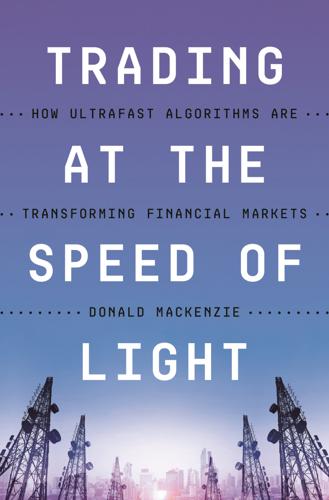
Trading at the Speed of Light: How Ultrafast Algorithms Are Transforming Financial Markets
by
Donald MacKenzie
Published 24 May 2021
If Direct Match had succeeded as Island had, the combination of high-frequency trading and anonymous order books might have transformed the entire Treasurys market, not just its interdealer segment. The chief obstacle to Direct Match turned out to be clearing. As noted earlier, in the trading of shares and of futures a central clearinghouse stands between the two parties to a trade (buying from the seller, and selling to the buyer), preserving anonymity and protecting each party from a default by the anonymous other. In the Treasurys market, that role is played by the Fixed Income Clearing Corporation (FICC), making it essential for a trading platform to have access to FICC.
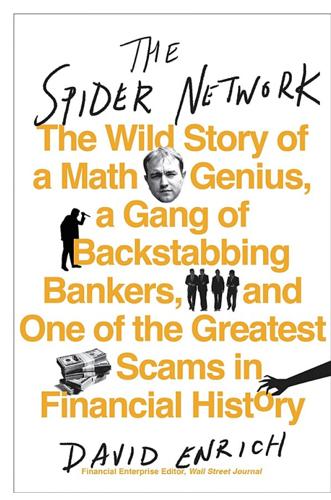
The Spider Network: The Wild Story of a Math Genius, a Gang of Backstabbing Bankers, and One of the Greatest Scams in Financial History
by
David Enrich
Published 21 Mar 2017
He broke the news to his sleepy employee: Lehman was filing for bankruptcy and Hayes needed to get to work immediately. In UBS’s mostly deserted office (Pieri himself was overseas on vacation), Hayes spent the day trying to identify every outstanding trade that his desk had with Lehman that hadn’t been routed through a central clearinghouse. A bankrupt financial institution couldn’t be counted on to follow through on its trades, so Hayes had to go through each transaction and figure out where UBS stood after negating all deals with Lehman. He was in the office until 3 a.m. working with a tech guy to complete the task. Hayes had another challenge that day: He had invested millions of dollars in derivatives that were due to pay off soon if yen Libor inched lower, a speculative bet that banks’ overall costs to borrow money in the Japanese currency—or at least what banks reported those borrowing costs to be—would decline.
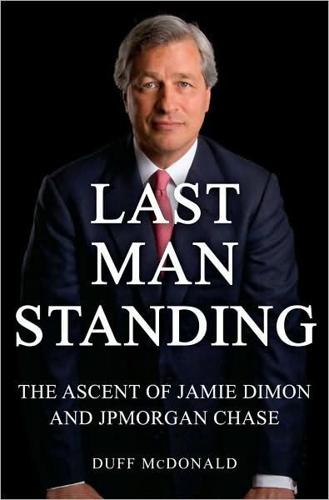
Last Man Standing: The Ascent of Jamie Dimon and JPMorgan Chase
by
Duff McDonald
Published 5 Oct 2009
There have been some suggestions that the interplay between a company’s bonds and its credit default swaps actually exacerbated problems—George Soros wrote convincingly about this phenomenon in the New York Times—but that phenomenon was arguably on the margin of a much larger problem: abandonment of risk management controls in pursuit of higher profits. When it came time for the first big test of credit default swaps—in the aftermath of Lehman Brothers’ bankruptcy—the settlement of those contracts took place without incident on October 21, 2008. Dimon has endorsed the creation of a central clearinghouse so derivatives exposures can be more closely monitored. But he considers the bank’s CDS business a valuable franchise and doesn’t consider it JPMorgan Chase’s problem if other investors hurt themselves by mishandling them. (Pointing to a healthy lobbying budget on this score, critics argue that even though he’s said the right thing publicly, Dimon and his team are actually stonewalling derivatives reform in order to protect the outsize margins the business generates.)
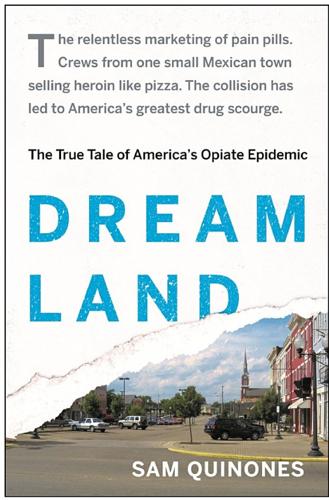
Dreamland: The True Tale of America's Opiate Epidemic
by
Sam Quinones
Published 20 Apr 2015
Brownlee said the records showed how the company was training salespeople to sell OxyContin as if it were nonaddictive and did not provoke withdrawal symptoms. Physicians, therefore, could feel comfortable prescribing it for many kinds of pain. “One of the pieces of evidence that was looked at were ‘call notes.’ The company had a process in which salesmen would go to a doctor, then summarize what was discussed. That went back to a central clearinghouse. Once we were able to see those, we began to see a pattern of conduct. Is this a few rogue guys or is this more of a corporate policy? It became clear that this was more than a few rogue [salesmen]. They were trained to sell the drug in a way that was simply not accurate. That was some of the best evidence of misbranding.

How Markets Fail: The Logic of Economic Calamities
by
John Cassidy
Published 10 Nov 2009
Imposing restrictions on the biggest hedge funds and private equity firms could well lead to a drastic shrinkage in these industries, which would be no great loss. Much of the activity that such firms engage in amounts to a zero-sum game, which doesn’t yield any economic gains for society at large. The proposed central clearinghouse for derivatives transactions is a good idea that doesn’t go far enough. By imposing leverage limits on traders, and demanding adequate collateral for exposed positions, the clearinghouse could eliminate a lot of counterparty credit risk. Unfortunately, the administration’s proposal applies only to “standardized” derivatives.

Makers and Takers: The Rise of Finance and the Fall of American Business
by
Rana Foroohar
Published 16 May 2016
To do that, you have to increase transparency about what’s happening in the first place. In the commodities arena, former CFTC chairman Gary Gensler fought the good fight for stricter regulation of derivatives, bringing a large chunk of the swaps market out of the shadowy darkness and into central clearinghouses where it can be more easily regulated. In the United States most commodities-linked OTC derivatives are now subject to central clearing. The CFTC has also made big progress on real-time reporting and registration of brokers, so that people actually know who’s doing the trading. But achieving even this level of regulation has been a long, hard slog.
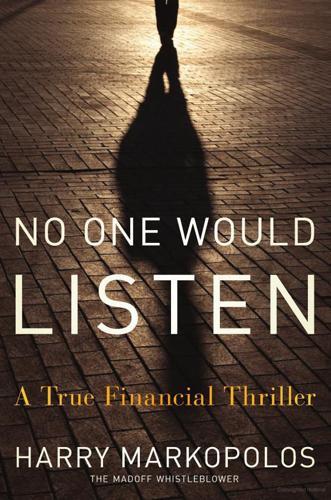
No One Would Listen: A True Financial Thriller
by
Harry Markopolos
Published 1 Mar 2010
Not funding these machines saves money but costs a fortune. Eleventh, as a policy, encourage whistleblowers. This is nearest and dearest to my heart and is the bottom line if the SEC intends to recover its reputation from this debacle. It has to open up an active Office of the Whistleblower to provide a central clearinghouse for complaints, which currently are handled ad hoc by 11 regional offices. According to the Association of Certified Fraud Examiners’ 2008 Report to the Nation, whistleblower tips detected 54.1 percent of uncovered fraud schemes in public companies. External auditors (and the SEC exam teams would certainly be considered external auditors) detected a mere 4.1 percent of the uncovered fraud schemes.
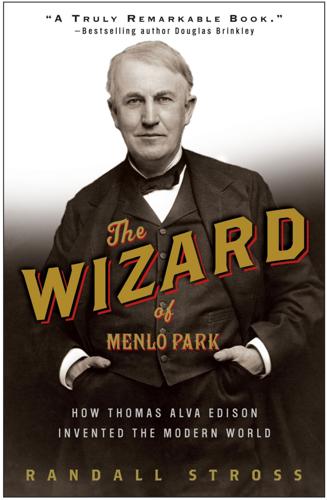
The Wizard of Menlo Park: How Thomas Alva Edison Invented the Modern World
by
Randall E. Stross
Published 13 Mar 2007
The film would be run through once, showing the images on one edge, then the film-transport mechanism would be shifted so that the images in the middle, which ran in the opposite direction, would be visible, and then the home projectionist would adjust the projector one more time to project the third row. This arrangement yielded a show that ran sixteen minutes. Along with the home projector, the company introduced a central clearinghouse for used films, which offered customers a way of replenishing the family’s entertainment supply by using the postal service to swap titles with others for a nominal processing fee. Edison, however, wanted to use his projector not for entertainment but for education. For preschoolers, his idea was nothing less than brilliant.

Flow: The Psychology of Optimal Experience
by
Mihaly Csikszentmihalyi
Published 1 Jul 2008
Thus, while consciousness is a mirror that reflects what our senses tell us about what happens both outside our bodies and within the nervous system, it reflects those changes selectively, actively shaping events, imposing on them a reality of its own. The reflection consciousness provides is what we call our life: the sum of all we have heard, seen, felt, hoped, and suffered from birth to death. Although we believe that there are “things” outside consciousness, we have direct evidence only of those that find a place in it. As the central clearinghouse in which varied events processed by different senses can be represented and compared, consciousness can contain a famine in Africa, the smell of a rose, the performance of the Dow Jones, and a plan to stop at the store to buy some bread all at the same time. But that does not mean that its content is a shapeless jumble.
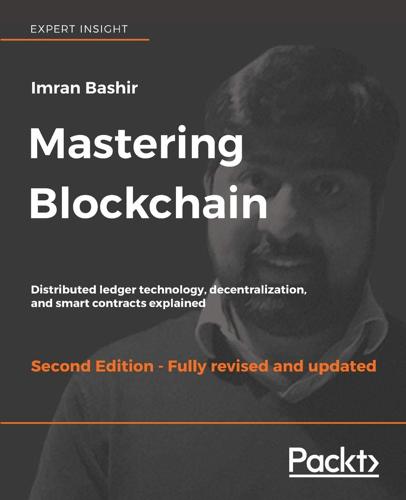
Mastering Blockchain, Second Edition
by
Imran Bashir
Published 28 Mar 2018
Clearing is the next step whereby the trade is matched between the seller and buyer based on certain attributes such as price and quantity. At this stage, accounts that are involved in payment are also identified. Finally, the settlement is where eventually the security is exchanged for payment between the buyer and seller. In the traditional trade life cycle model, a central clearinghouse is required to facilitate trading between parties which bears the credit risk of both parties. The current scheme is somewhat complicated, whereby a seller and buyer have to take a complicated route to trade with each other. This comprises of various firms, brokers, clearing houses, and custodians but with blockchain, a single distributed ledger with appropriate smart contracts can simplify this whole process and can enable buyers and sellers to talk directly to each other.

Chaos Monkeys: Obscene Fortune and Random Failure in Silicon Valley
by
Antonio Garcia Martinez
Published 27 Jun 2016
This glittering vision in Facebook Blue of everything running on Facebook would take years to realize. By comparison, the value of the open plan would be realized instantaneously. If FBX had access to the identity matching we’d built on the Custom Audiences side, not to mention ads inventory on mobile, then the exchange could serve as a central clearinghouse for online identity everywhere. Everything we were ideating around identity, that entire spiel I regaled you with about names, both online and off, could be realized in a few weeks, all due to the open and standardized nature of FBX. And all of it implemented with three engineers and one cocky product manager, and not the roomful of bickering, big-company clowns that every meeting on the matter tended to feature.
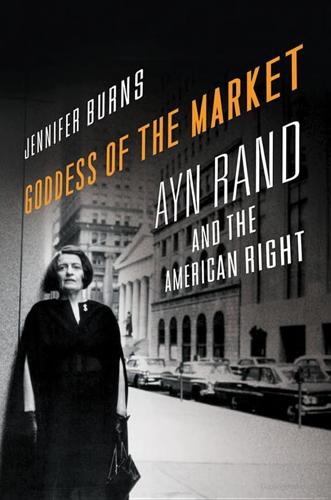
Goddess of the Market: Ayn Rand and the American Right
by
Jennifer Burns
Published 18 Oct 2009
The small band of libertarians waving black flags with dollar signs in front of the Philadelphia Federal Courthouse was largely misunderstood, with several passersby accusing them of Communist sympathies.27 Even a reading of Galt’s individualist oath did little to clarify the protest’s intent. However inscrutable to outsiders, SIL quickly emerged as the central clearinghouse for the libertarian movement by dint of its free-form membership structure and the enthusiasm of its founders. Immediately after its birth SIL claimed 103 chapters, and at its first-year anniversary boasted thirteen hundred members, three thousand persons in contact with the organization, and 175,000 pieces of literature distributed.28 The 1972 directory of SIL was fat with libertarian organizations.

The Teeth of the Tiger
by
Tom Clancy
Published 2 Jan 1998
Too free a use of signal-intelligence information revealed its existence, causing the targets to change their methods of encryption, and so compromising the source. Using it too little, on the other hand, was as bad as not having it at all. Unfortunately, the intelligence services leaned more to the latter than the former. The creation of a new Department of Homeland Security had, theoretically, set up a central clearinghouse for all threat-related information, but the size of the new superagency had crippled it from the get-go. The information was all there, but in too great a quantity to be processed, and with too many processors to turn out a viable product. But old habits died hard. The intelligence community remained intact, a super-agency overtop its own bureaucracy or not, and its segments talked to each other.
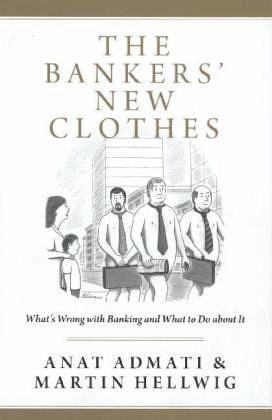
The Bankers' New Clothes: What's Wrong With Banking and What to Do About It
by
Anat Admati
and
Martin Hellwig
Published 15 Feb 2013
An example of such fake arm’s-length relations is provided by the system of German public banks, in which local savings banks, which are active in retail banking, collect more funds from depositors than they can use themselves and automatically invest large parts of their surplus funds with the Landesbanken, which are active in investment banking. In any arrangement, the key question is how to ensure proper governance for the funding of risky investment banking activities. 46. Attempts to form central clearinghouses for derivatives might actually create new and particularly dangerous systemically important institutions. Being owned by the participating banks would make the clearinghouses highly connected. It is essential that they have sufficient ability to absorb losses without needing any support from banks or from the government.

Heaven's Command (Pax Britannica)
by
Jan Morris
Published 22 Dec 2010
Since 1841 Kew Gardens, Queen Charlotte’s delicious belvedere beside the Thames outside London, had been a State institution, where all available botanical knowledge was considered, sifted and turned into green delight or sustenance; and by the middle of the century Kew had its derivatives or ancillaries in most of the British possessions—part pleasure-places, part scientific laboratories, with their learned keepers and their catalogues, experimenting, classifying, and sending a copious flow of samples, products or memoranda back to the central clearing-house at home. One important outpost in this chain of research was Jamaica, and a visitor to that island making a tour of its botanical gardens might be deluded into supposing that the British Empire was already a cohesive, centralized organization. Each of the three island gardens, each in a different climatic zone, played its own particular part in research, with its own specialities, its own methods, and its own team of diligent scientific gentlemen.

Appetite for America: Fred Harvey and the Business of Civilizing the Wild West--One Meal at a Time
by
Stephen Fried
Published 23 Mar 2010
Although Dave had started as little more than a bookkeeper, two years later Fred had him running the day-to-day operations for the entire chain—now more than a dozen different locations spread out over eleven hundred miles between Topeka and the western border of New Mexico. The Kansas City office became the communications hub of the company. It was also the central clearinghouse for the large amounts of cash generated by the eating houses. From the very beginning in Topeka, it was not uncommon for each house to generate at least $250 ($5,200) in pure profit each month. Many of them made much more—enough so that in locations that were less profitable, as long as the managers were doing a good job, they were told to maintain standards even if it meant running deficits.
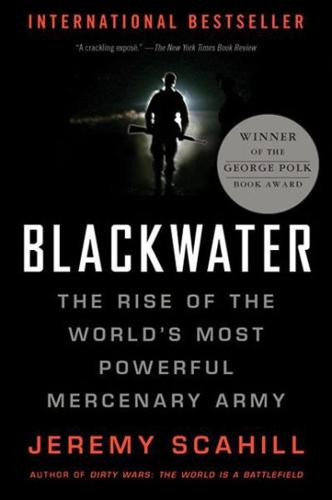
Blackwater: The Rise of the World's Most Powerful Mercenary Army
by
Jeremy Scahill
Published 1 Jan 2007
The revised report said that 3,646 people were wounded by terror attacks in 2003, more than double the number in Black’s original report, while 625 were killed, dwarfing the report’s original count of 307.92 As Krugman observed, Black and other officials blamed the errors on “‘inattention, personnel shortages and [a] database that is awkward and antiquated.’ Remember: we’re talking about the government’s central clearinghouse for terrorism information, whose creation was touted as part of a ‘dramatic enhancement’ of counterterrorism efforts more than a year before this report was produced. And it still can’t input data into its own computers? It should be no surprise, in this age of Halliburton, that the job of data input was given to and botched by private contractors.”93 Bush’s Democratic challenger in the 2004 presidential election, John Kerry, charged through a spokesperson that Bush was “playing fast and loose with the truth when it comes to the war on terror,” adding that the White House “has now been caught trying to inflate its success on terrorism.”94 There was talk of heads rolling at the State Department over the report, but not Black’s.

An Empire of Their Own: How the Jews Invented Hollywood
by
Neal Gabler
Published 17 Nov 2010
Eager to demonstrate their cooperation and protect their own reputations, some officials of organized Jewry, including Gang, began hunting for a mechanism that would somehow rationalize the anarchic clearance system. In doing so, Gang and the others no doubt hoped that they would be demonstrating their patriotism to HUAC and its fellow travelers, while at the same time assisting Jews in need. The idea for a new committee that would serve as a central clearinghouse apparently originated with Edwin Lukas, a staff member of the American Jewish Committee, but it was Gang who seemed to promote the idea most enthusiastically. What Gang proposed early in 1952 was a Citizens Committee for Cooperation with Congress to be composed of representatives from the entertainment world.

Hard Landing
by
Thomas Petzinger
and
Thomas Petzinger Jr.
Published 1 Jan 1995
Having identified the most appropriate flight for a customer, the agent would then telephone the airline—or multiple airlines, perhaps, in the case of connecting flights—and make the appropriate reservations. The agent wrote each ticket by hand or wheeled it through a typewriter, compiled a written itinerary, collected the fare, and sent the money (less the commission, then fixed by the CAB at 5 percent) to a central clearinghouse, which in turn disbursed it to the airlines. Travel agents had to maintain a bundle of phone lines and a stable of clerks, typists, and reservationists while managing a library of travel literature to advise clients on vacation destinations and business arrangements. But what if the travel agents could go on-line?
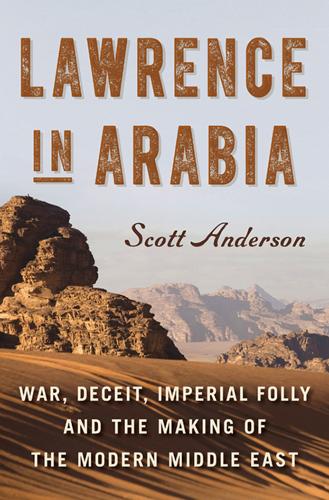
Lawrence in Arabia: War, Deceit, Imperial Folly and the Making of the Modern Middle East
by
Scott Anderson
Published 5 Aug 2013
That neutrality could also serve as a convenient shield while Germany laid the groundwork for the most important military operation to be conducted in the region, an assault on the Suez Canal. In mid-August, the kaiser signed a secret directive calling for the creation of the Nachrichtenstelle für den Orient (Intelligence Bureau for the East), to be based in Constantinople and to serve as the central clearinghouse for Germany’s subversion campaigns in the Near East. The director of that bureau was to be Max von Oppenheim. Among Oppenheim’s first acts upon assuming the post was to put out an offer of employment to his former protégé, Curt Prüfer. Oppenheim’s confidence in his apprentice was certainly deserved.

God's Bankers: A History of Money and Power at the Vatican
by
Gerald Posner
Published 3 Feb 2015
Notwithstanding its mix of international delegates, and even though it boasted an American president, it was firmly under Nazi control from 1940 on.3 The German BIS representatives were Baron Kurt von Schröder, a leading banker and Gestapo officer; Hermann Schmitz, the chief of the industrial conglomerate I. G. Farben; Walter Funk, Reichsbank president; and Emil Puhl, an economist and vice president of the Reichsbank.4 Under their influence, BIS became a central clearinghouse for emptying gold reserves from countries such as Austria, Belgium, and Czechoslovakia.5 “Washing gold” was the euphemism for how BIS described bringing bullion covertly into Switzerland and converting it into untraceable cash, usually Swiss francs.6 About 80 percent of all Reichsbank gold sent abroad was laundered through Switzerland.7 In early 1942, Puhl—who oversaw BIS’s gold program—shared with Funk that the Gestapo had begun depositing gold from concentration camps into the Reichsbank.8 By that November, an internal Reichsbank report noted that it had received an “unusually great” amount of smelted dental gold.9 In 1943, the Reichsbank received the first packets of gold stamped “Auschwitz” (it is impossible to determine precisely how much gold the SS sent to the Reichsbank since the records of those shipments that were seized by the U.S. military later disappeared; the United States failed to make copies before returning the documents to the predecessor of the Bundesbank, where the files were destroyed, allegedly as part of routine maintenance).10,I BIS was involved in far more than washing gold.
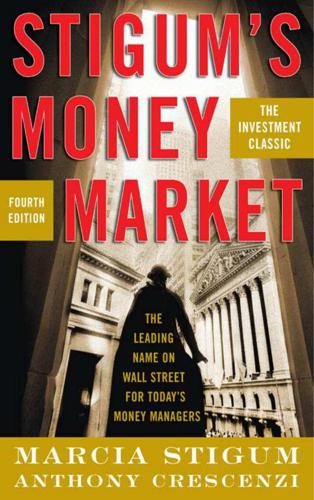
Stigum's Money Market, 4E
by
Marcia Stigum
and
Anthony Crescenzi
Published 9 Feb 2007
If the average maturity of the liabilities is less than that of the assets, the bank is running a short and open book. book-entry securities: Securities that are not represented by engraved pieces of paper but are maintained in computerized records. Securities that are not book-entry do not move from holder to holder but are usually kept in a central clearinghouse or by another agent. book value: The value at which a debt security is shown on the holder’s balance sheet. Book value is often acquisition cost plus or minus amortization/accretion, which may differ markedly from market value. It can be further defined as tax book, accreted book, or amortized book value.
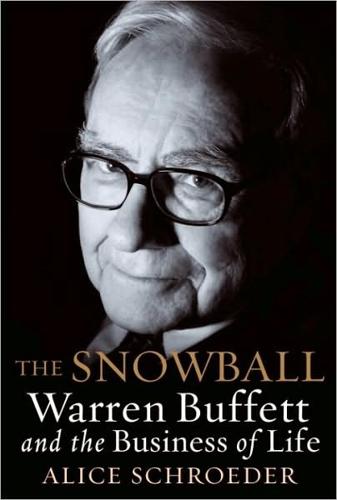
The Snowball: Warren Buffett and the Business of Life
by
Alice Schroeder
Published 1 Sep 2008
On a micro level, Buffett wrote, these things often were true, but on a macro level, derivatives could someday cause midair collisions over Manhattan, London, Frankfurt, Hong Kong, and other parts of the globe. He and Munger believed that derivatives should be regulated, more disclosure should be required, they should be traded through a central clearinghouse, and the Federal Reserve should act as a central banker to the major investment banks, not just the commercial banks. Federal Reserve Chairman Alan Greenspan, however, defended the unregulated market and made sport of Buffett’s wariness.10 Buffett’s “financial weapons of mass destruction” was quoted everywhere, often paired with a question about whether he was overreacting.11 Even as early as 2002, however, the beginnings of mass destruction could be seen in the mobile-home industry.